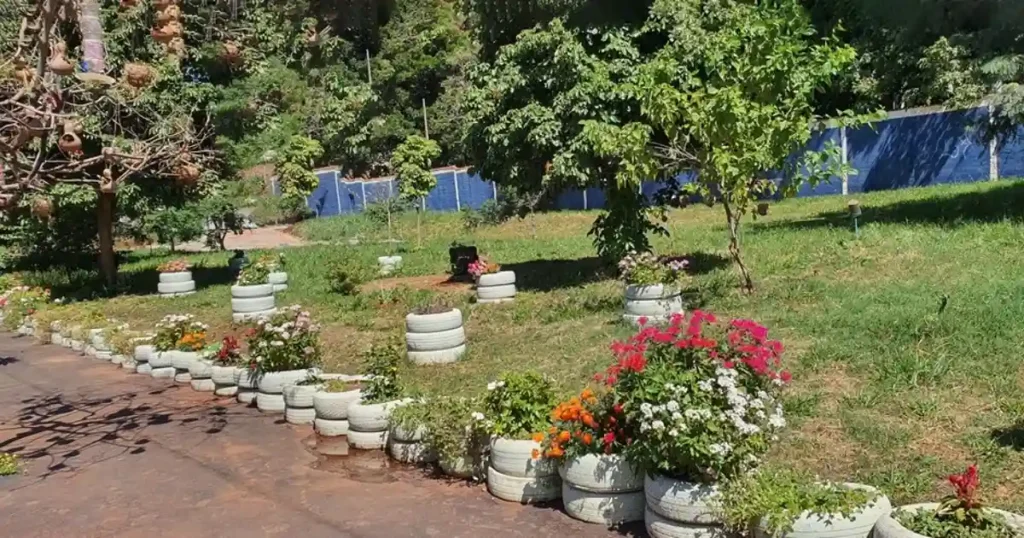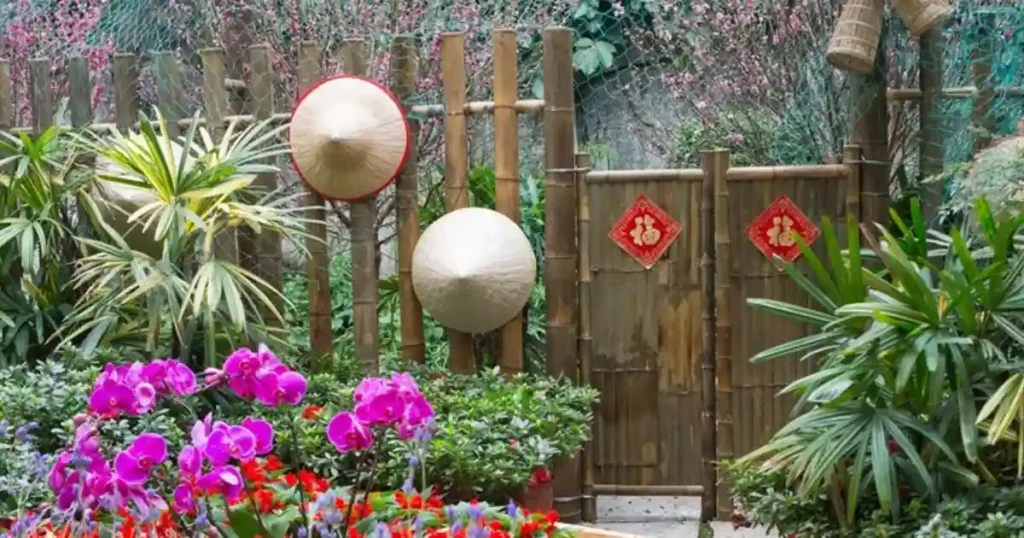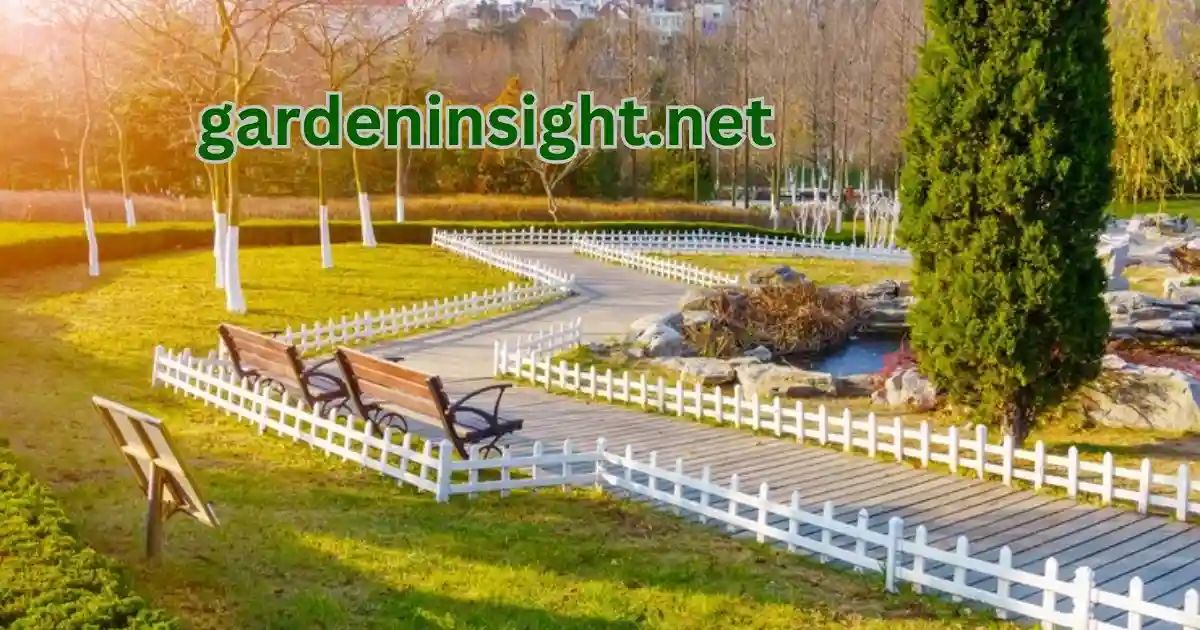To make border in garden beds is a fantastic way to add definition, structure, and visual appeal to your outdoor space.
Whether you’re a seasoned gardener or just starting, garden borders can transform your yard from simple to stunning.
This comprehensive guide will walk you through everything you need to know about making a border in your garden, from choosing the right materials to tackling different shapes and styles.
Planning To Make Border in Garden

Before you grab your shovel and start digging, it’s important to plan your garden border carefully. Consider the following factors:
- Purpose: What do you want your border to achieve? Is it purely decorative, or do you need it to contain plants and prevent them from spreading?
- Style: What kind of look are you going for? Formal, informal, modern, rustic?
- Materials: What materials will best suit your style and budget?
- Size and Shape: How large and what shape do you want your border to be? Straight lines, curves, or something more intricate?
- Plants: What kind of plants will you be growing in your border? This will affect the size and depth of the border.
Choosing the Right Materials
The materials you choose for your garden border will have a big impact on its overall look and feel. Here are some popular options:
Wood
Wood is a classic choice for garden borders, offering a natural and versatile look. You can use wooden planks, logs, or even branches to create a border. Wooden borders can be simple or more elaborate, depending on your style.
Stone
Stone is another popular material for garden borders, adding a touch of elegance and permanence to your garden. You can use natural stone, such as flagstone or river rock, or manufactured stone, such as concrete pavers.
Brick
Brick is a durable and attractive option for garden borders, offering a classic and timeless look. You can use bricks in a variety of patterns and colors to create a unique border.
Metal
Metal edging, such as aluminum or steel, can give your garden a modern and sleek look. Metal edging is also very durable and low maintenance.
Plastic
Plastic edging is a budget-friendly option that is easy to install. It comes in a variety of styles and colors, making it a versatile choice for many gardens.
Plants
You can also use plants to create a living border for your garden. Low-growing shrubs, groundcovers, or even flowers can be used to create a beautiful and natural border.
How to Make Border in Garden for Beginners
If you’re new to gardening, creating a simple border is a great way to get started. Here’s a step-by-step guide:
- Choose your materials: For beginners, we recommend using wood or plastic edging as they are easy to work with.
- Mark out your border: Use string and stakes to mark the desired shape and size of your border.
- Dig a trench: Dig a trench along the marked line, deep enough to accommodate your chosen edging material.
- Install the edging: Place the edging material in the trench and secure it in place with stakes or pegs.
- Backfill the trench: Fill the trench with soil, firming it down as you go.
- Plant your border: Choose plants that will thrive in your garden’s conditions and plant them along the border.
How to Make Curved Borders in Garden
Curved borders can add a touch of elegance and flow to your garden. Here’s how to create them:
- Mark out your border: Use a garden hose or rope to lay out the desired curve of your border.
- Dig a trench: Dig a trench along the marked line, making sure it is wide enough to accommodate your chosen edging material.
- Install the edging: Flexible edging materials, such as plastic or metal, work best for curved borders. Install the edging in the trench, bending it as needed to follow the curve.
- Backfill the trench: Fill the trench with soil, firming it down as you go.
- Plant your border: Choose plants that will complement the curve of your border and plant them accordingly.
How to Make Wooden Border in Garden

Wooden borders offer a natural and versatile look. Here’s how to create one:
- Choose your wood: You can use wooden planks, logs, or even branches to create a wooden border.
- Prepare the wood: If you’re using untreated wood, you’ll need to treat it with a wood preservative to prevent rot.
- Install the wood: You can install the wood directly into the ground or create a raised bed by building a frame from the wood.
- Secure the wood: Use stakes or screws to secure the wood in place.
- Plant your border: Choose plants that will complement the natural look of the wood.
How to Put Plastic Border in Garden
Plastic edging is a budget-friendly and easy-to-install option. Here’s how to use it:
- Choose your plastic edging: Plastic edging comes in a variety of styles and colors, so choose one that complements your garden.
- Mark out your border: Use string and stakes to mark the desired shape and size of your border.
- Dig a trench: Dig a trench along the marked line, deep enough to accommodate the plastic edging.
- Install the edging: Place the plastic edging in the trench and secure it in place with the stakes provided.
- Backfill the trench: Fill the trench with soil, firming it down as you go.
- Plant your border: Choose plants that will thrive in your garden’s conditions and plant them along the border.
How to Make Rock Border for Garden
Rock borders add a touch of natural beauty and texture to your garden. Here’s how to create one:
- Choose your rocks: You can use a variety of rocks, such as river rock, flagstone, or even boulders, to create a rock border.
- Prepare the area: Remove any grass or weeds from the area where you want to create your border.
- Lay the rocks: Start by laying the largest rocks first, then fill in the gaps with smaller rocks.
- Secure the rocks: Use landscape fabric or mortar to secure the rocks in place, especially if you’re using larger rocks.
- Plant your border: Choose plants that will complement the natural look of the rocks.
Conclusion
Creating a border for your garden is a rewarding way to enhance its beauty and functionality. By carefully planning your border, choosing the right materials, and following the steps outlined in this guide, you can create a stunning border that will be the envy of the neighborhood.
Remember to consider your garden’s style, the types of plants you want to grow, and your personal preferences when making your choices.
With a little effort and creativity, you can transform your garden into a beautiful and inviting space.
FAQs about Garden Borders
Some of the frequently inquired questions about ways to make border in garden are as follow:
How Deep Should a Garden Border Be?
The depth of your garden border will depend on the type of plants you’re growing and the materials you’re using. For most borders, a depth of 6-12 inches is sufficient.
How Do You Keep a Garden Border Straight?
To keep a garden border straight, use string and stakes to mark out the line of the border before you start digging. You can also use a long, straight piece of wood or a level to help you keep the line straight as you’re digging.
What Can I Use for a Garden Border?
You can use a variety of materials for a garden border, including wood, stone, brick, metal, plastic, and even plants. Choose materials that complement your garden’s style and your personal preferences.
How Do You Edge a Garden Border with Rocks?
To edge a garden border with rocks, start by digging a trench along the desired line of the border. Then, lay the rocks in the trench, starting with the largest rocks first and filling in the gaps with smaller rocks. Use landscape fabric or mortar to secure the rocks in place, especially if you’re using larger rocks.
How Do You Make a Flower Bed Border with Bricks?
To make a flower bed border with bricks, start by digging a trench along the desired line of the border. Then, lay the bricks in the trench, using a level to ensure they are even. You can lay the bricks in a variety of patterns, such as a running bond or a herringbone pattern. Once the bricks are laid, backfill the trench with soil, firming it down as you go.
